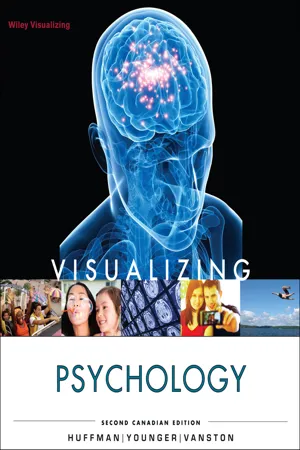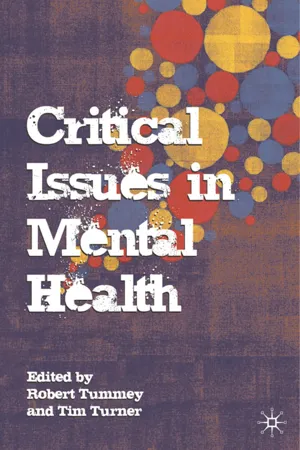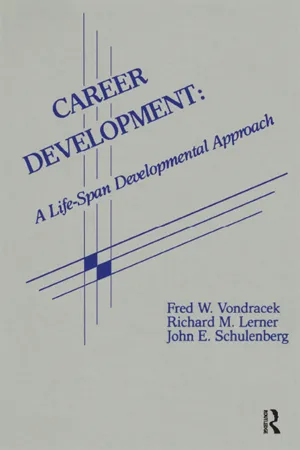Psychology
Lifespan
Lifespan refers to the entire duration of an individual's life, from birth to death. In psychology, the study of lifespan development focuses on the physical, cognitive, and socioemotional changes that occur across different stages of life, such as infancy, childhood, adolescence, adulthood, and old age. Understanding lifespan development helps psychologists comprehend how individuals grow and change over time.
Written by Perlego with AI-assistance
Related key terms
1 of 5
10 Key excerpts on "Lifespan"
- eBook - PDF
- Rose M. Spielman, William J. Jenkins, Marilyn D. Lovett(Authors)
- 2020(Publication Date)
- Openstax(Publisher)
You have experienced firsthand much of what is discussed in this chapter. Now consider what psychological science has to say about your physical, cognitive, and psychosocial development, from the womb to the tomb. 9 Lifespan Development 9.1 What Is Lifespan Development? LEARNING OBJECTIVES By the end of this section, you will be able to: • Define and distinguish between the three domains of development: physical, cognitive and psychosocial • Discuss the normative approach to development • Understand the three major issues in development: continuity and discontinuity, one common course of development or many unique courses of development, and nature versus nurture My heart leaps up when I behold A rainbow in the sky: So was it when my life began; So is it now I am a man; So be it when I shall grow old, Or let me die! The Child is father of the Man; I could wish my days to be Bound each to each by natural piety. (Wordsworth, 1802) In this poem, William Wordsworth writes, “the child is father of the man.” What does this seemingly incongruous statement mean, and what does it have to do with Lifespan development? Wordsworth might be suggesting that the person he is as an adult depends largely on the experiences he had in childhood. Consider the following questions: To what extent is the adult you are today influenced by the child you once were? To what extent is a child fundamentally different from the adult he grows up to be? These are the types of questions developmental psychologists try to answer, by studying how humans change and grow from conception through childhood, adolescence, adulthood, and death. They view development as a lifelong process that can be studied scientifically across three developmental domains—physical, cognitive, and psychosocial development. Physical development involves growth and changes in the body and brain, the senses, motor skills, and health and wellness. - eBook - PDF
- Catherine A. Sanderson, Karen R. Huffman(Authors)
- 2016(Publication Date)
- Wiley(Publisher)
© jfairone/iStockphoto 235 © Pojoslaw/Shutterstock 236 CHAPTER 9 Life Span Development TABLE 9.1 Life Span Development STAGE APPROXIMATE AGE Prenatal Conception to birth Infancy Birth to 18 months Early childhood 18 months to 6 years Middle childhood 6 to 12 years Adolescence 12 to 20 years Young adulthood 20 to 45 years Middle adulthood 45 to 60 years Late adulthood 60 years to death 9.1 Studying Development LEARNING OBJECTIVES Retrieval Practice While reading the upcoming sections, respond to each Learning Objective in your own words. Review developmental psychology’s theoretical issues and key research approaches. • Define developmental psychology. • Discuss the three key theoretical issues in developmental psychology. • Contrast the cross-sectional research design with the longitudinal research design. Just as some parents carefully document their child’s progress throughout his or her life, the field of developmental psychology studies growth and change throughout the eight major stages of life—from conception to death, or “womb to tomb” (Table 9.1). These studies have led to three key theoretical issues. Theoretical Issues Almost every area of research in human development frames questions around three ma- jor issues: 1. Nature or nurture? How do both genetics (nature) and life experiences (nurture) influence development? According to the nature position, development is largely governed by automatic, genetically predetermined signals in a process known as maturation. Just as a flower unfolds in accord with its genetic blueprint, humans crawl before we walk, and walk before we run. In addition, naturists believe there are critical periods, or windows of opportu- nity, that occur early in life when exposure to certain stimuli or experiences is neces- sary for proper development. For example, many newborn animals, and theoretically humans, form rigid attachments to particular stimuli shortly after birth, a process called imprinting (Figure 9.1). - eBook - PDF
- Catherine A. Sanderson, Karen R. Huffman(Authors)
- 2019(Publication Date)
- Wiley(Publisher)
274 CHAPTER 9 Life Span Development 9.1 Studying Development LEARNING OBJECTIVES Retrieval Practice While reading the upcoming sections, respond to each learning objective in your own words. Review developmental psychology’s theoretical issues and key research approaches. • Define developmental psychology. • Discuss the three key theoretical issues in developmental psychology. • Contrast the cross-sectional research design with the longitudinal research design. • Discuss cultural psychology’s four research guidelines. Real World Application Question [AQ1] Why are young people more supportive of gay marriage? TABLE 9.1 Life Span Development Stage Approximate Age Prenatal Conception to birth Infancy Birth to 18 months Early childhood 18 months to 6 years Middle childhood 6 to 12 years Adolescence 12 to 20 years Young adulthood 20 to 45 years Middle adulthood 45 to 60 years Late adulthood 60 years to death Are you one of the lucky individuals who grew up with loving parents who documented every stage of your development with photos, videos, and journals—starting with your birth, first smile, first day of school, and all the way to your high school graduation? Just as some parents carefully document their child’s progress throughout his or her life, the field of developmental psychology studies age-related behavior and mental processes—from conception to death, or “womb to tomb” (Table 9.1). As you might expect, studying development across the entire life span is a monu- mental task, so we’ve organized this chapter into three major sections—physical, cog- nitive, and social-emotional development. Before we begin, we need to briefly examine the research issues and methods psychologists use to study development. These stud- ies have led to three key theoretical issues. Theoretical Issues Almost every area of research in human development frames questions around three major issues: 1. - eBook - ePub
Contextual Influences on Life Span/life Course
A Special Issue of Research in Human Development
- Jacquelynne S. Eccles(Author)
- 2018(Publication Date)
- Routledge(Publisher)
Lifespan Psychology: From Developmental Contextualism to Developmental Biocultural Co-constructivismPaul Β. Baltes and Jacqui SmithMax Planck Institute for Human DevelopmentLifespan psychology has always been associated with a family of scripts about development and aging. An initial set of scripts included proposals about developmental contextualism at the macro-level (e.g., age-graded, history-graded, and non normative influences). Recent theoretical efforts to link evolutionary and ontogenetic perspectives engendered an additional set of interrelated scripts about the nature and consequences of human development. Proposals about the biocultural architecture of the Lifespan highlight its inherent incompleteness and aging-based increase in incompleteness and vulnerability. Age-related differences in the overall allocation of resources (from growth to maintenance and the regulation of loss) as well as the general-purpose mechanisms of selection, optimization, and compensation orchestrate adaptive development and aging within the constraints of the biocultural architecture. We argue that this package of conceptions converges with the notion of developmental biocultural co-constructivism and specifies the zone within which human development can be expressed.Without downgrading the role of alternative theoretical endeavors and their powerful impact on the developmental sciences (see Elder, 1998; Lerner, 2002; and Magnusson, 1996, for reviews), Lifespan researchers like to argue that their theoretical orientations have considerably enriched, if not transformed, the field of developmental psychology (e.g., P. B. Baltes, 1987, 1997; P. B. Baltes, Lindenberger, & Staudinger, 1998; Staudinger & Lindenberger, 2003). In essence, the Lifespan orientation was designed not only to highlight that development continues beyond childhood and adolescence but also to bring to the foreground additional content phenomena and principles of determination. When researchers view development as being lifelong rather than as restricted to a single age period, topics such as wisdom, intergenerational dynamics, and the influence of changing historical contexts on individual development spring to mind. Consider, for instance, the changes in the directional influence and power of reciprocal socialization when contrasting parents and infants with the counterpart situation in the second half of life, parents and their adult children (Hetherington & Baltes, 1988). Or consider the consequences of the historical increase in average life expectancy, from about 45 years in 1900 to about 80 years in the year 2000. Such dramatic focal changes on social transactions or history-conditioned phenomena are more difficult to identify when the theoretical lens is set for only a single age period, such as childhood. - eBook - PDF
- Karen R. Huffman, Alastair Younger, Claire Vanston(Authors)
- 2013(Publication Date)
- Wiley(Publisher)
To empha- size that development is an ongoing, lifelong process, throughout the next two chapters we will trace physical, cognitive, social, moral, and personality development— one at a time—from conception to death. This topical approach will allow us to see how development affects an individual over the entire Lifespan. Purestock 239 CHAPTER OUTLINE Studying Development 240 • Theoretical Issues: Ongoing Debates ■ Psychological Science: Deprivation and Development • Research Methods:Two Basic Approaches Physical Development 244 • Prenatal Period and Early Childhood: ATime of Rapid Change ■ What a Psychologist Sees: How an Infant Perceives the World • Adolescence and Adulthood: ATime of Both Dramatic and Gradual Change Cognitive Development 255 • Stages of Cognitive Development: Birth to Adolescence ■ Applying Psychology: Putting Piaget to theTest • Assessing Piaget’sTheory: Criticisms and Contributions CHAPTER PLANNER ✓ ✓ ❑ Study the picture and read the opening story. ❑ Scan the Learning Objectives in each section: p. 240 ❑ p. 244 ❑ p. 255 ❑ ❑ Read the text and study all visuals. Answer any questions. Analyze key features ❑ Psychological Science, p. 241 ❑ Process Diagram, p. 245 ❑ Visualizing, p. 250 ❑ What a Psychologist Sees, p. 251 ❑ Study Organizer, p. 256 ❑ Applying Psychology, p. 259 ❑ Stop: Answer the Concept Checks before you go on: p. 243 ❑ p. 254 ❑ p. 261 ❑ End of chapter ❑ Review the Summary and Key Terms. ❑ Answer the Critical and Creative Thinking Questions. ❑ Complete the Self-Test and check your answers. 240 CHAPTER 9 Lifespan Development I: Physical and Cognitive Development Studying Development LEARNING OBJECTIVES e begin our study of human development by focusing on some key theoretical issues and de- bates. We then discuss two basic research meth- ods and their advantages and disadvantages. - eBook - PDF
- Karen R. Huffman, Katherine Dowdell, Catherine A. Sanderson(Authors)
- 2017(Publication Date)
- Wiley(Publisher)
Keep in mind that topics in both chapters are intricately interwoven. Why Study Psychology? Did you know that • . . . at the moment of conception, you were smaller than the period at the end of a sentence? • . . . during the last few months of pregnancy, you (as a fetus) could hear sounds outside your mother’s womb? • . . . prenatal exposure to smoke increases the risk of obesity in later life? • . . . at birth, your head was approximately one-fourth of your total body size, but as an adult it’s only one-eighth? Cavid M Phillips/Science Source Louis Myrie/WireImage/Getty Images 290 CHAPTER 9 Life Span Development I • . . . within the first few days of life, newborns breast-fed by their mothers recognize and show preference for the odor and taste of their own mother’s milk? • . . . human brains aren’t fully developed until the mid-20s? • . . . attachment patterns you form as an infant may have last- ing effects on your adult romantic relationships? • . . . young people are more supportive of gay marriage than older people? Just as some parents carefully document their child’s progress throughout his or her life, the field of developmental psychology studies growth and change throughout the eight major stages of life—from conception to death, or “womb to tomb” (Table 9.1). These studies have led to three key theoretical issues. Theoretical Issues Almost every area of research in human development frames questions around three major issues: 1. Nature or nurture? How do genetics (nature) and life experiences (nurture) influence development? According to the nature position, development is largely governed by au- tomatic, genetically predetermined signals in a process known as maturation. Just as a flower unfolds in accord with its genetic blueprint, humans crawl before we walk and walk before we run. - eBook - PDF
- Robert Tummey, Tim Turner(Authors)
- 2008(Publication Date)
- Red Globe Press(Publisher)
C H A P T E R 108 7 Introduction A Lifespan approach to mental health highlights that human existence in a basic sense is fixed for us all. We are conceived, we are born, we develop and then we die after a variable period of time. The events within and between these stages and even the length of time involved are shaped and influenced by social factors. A Lifespan approach sensitizes us to what happens at a moment in time (synchronic factors) The Lifespan David Pilgrim, Anne Rogers and Robert Tummey Exploring the Lifespan, the authors offer a view that considers a range of issues within an age-related context. Quite simply, the chapter addresses mental illness from birth to death. Opening with antenatal life, inequalities at the outset are detailed, leading into infancy. Within the childhood section, an overview is given on attachment and psychodynamic theory. Adolescence is then explored as the transition from childhood to adulthood, a vulnerable period of potential dysfunctional withdrawal. Middle adulthood highlights the time of responsibility and competence. Any withdrawal from this is more obvious than in any other stage of the Lifespan. Older adulthood concludes the chapter, identifying disparity between the mental health needs of older people and the services they receive. BRIEF CHAPTER OUTLINE THE Lifespan 109 and across time (diachronic factors). It also invites us to examine the contention surrounding forms of determinism (what causes mental health problems) and the biopsychosocial consequences of mental health problems. With this complexity in mind, this chapter will commence from antenatal life through to old age. Antenatal life: inequalities at the outset The extent to which mental health problems can be attributed to genetic dis- position has been fraught with controversy. The psychiatric profession, since its inception in the middle of the nineteenth century, has been linked to a strong advocacy of genetic determination. - eBook - ePub
Career Development
A Life-span Developmental Approach
- Fred W. Vondracek, Richard M. Lerner, John E. Schulenberg(Authors)
- 2019(Publication Date)
- Routledge(Publisher)
Chapter 1 , theory building has been relatively absent in recent decades, the application of change-sensitive methodologies is needed, and collaboration across disciplinary boundaries is essential.There are two key propositions or assumptions that are central to the life-span view of human development. They have been labeled embeddedness (Lerner, Skinner, & Sorell, 1980) and dynamic interaction (Lerner, 1978, 1979, 1984) and they, in turn, have important implications regarding (a) the plasticity of individual development; (b) the capacity of individuals to play an active part in their own development; and (c) the potential for intervention across the life-span. Collectively, these propositions and implications constitute the core of current life-span thinking in human development.Embeddedness and Dynamic InteractionismThe idea of embeddedness is that the key phenomena of human life exist at multiple levels of analysis (e.g., the inner-biological, individual-psychological, dyadic, organizational, social network, community, societal, cultural, outer physical-ecological, and historical); at any one point in time variables and processes from any and all of these multiple levels may contribute to human functioning. However, it is particularly important to have a perspective about human development that is sensitive to the influences of these multiple levels because the levels do not function in parallel, i.e., as independent domains. Rather, the variables and processes at one level influence and are influenced by the variables and processes at the other levels; that is, there is a dynamic interaction among levels of analysis, where each level may be both a product and a producer of the functioning and changes at all other levels. This idea is, as may be recognized by recalling the discussion in Chapter 2 - eBook - PDF
- Beverly Greene, Gladys Croom, Beverly A. Greene, Gladys L. Croom(Authors)
- 1999(Publication Date)
- SAGE Publications, Inc(Publisher)
3 Including Sexual Orientation in Life Span Developmental Psychology D O U G L A S C. K I M M E L T eaching life span developmental psychology in Japan during my year as a Fulbright Visiting Professor provided a valuable per-spective on the field. It became clear to me that, in a Japanese cultural context, the topic we assume is developmental psychology can also be taught as an empirical description of North American culture in the 20th century At my main university, Tokyo Women's Christian Uni-versity, my courses on adolescence and on adulthood and aging were taught as courses in the sociology department. At a second school, Tsuda College, the course on adulthood and aging was taught in the English department because it was taught in English. At the third school, the University of Tokyo, it was taught in the Department of American Studies. In each case, the course focused on central aspects of adult development and old age in the United States. Thus, my psy-chology course in Japan was really a course in Western social science, English, and American studies simultaneously. Now that I have re-AUTHOR'S NOTE: This chapter includes the ideas of Anthony D'Augelli and Margaret Rosario who helped me conceptualize and identify the relevant topics. 59 60 I EDUCATION, RESEARCH, AND PRACTICE turned to teach in an urban, multiethnic, public university in the United States, this experience changed my perception of the field to a much broader conception of the significance and context of life span developmental psychology. If we consider life span developmental psychology as essentially a study of North American experiences of infancy, childhood, adoles-cence, youth, maturity, and old age, we are reminded of the extent to which the field reflects normative cultural values about those experi-ences. In previous decades, those normative values tended to reflect male viewpoints, and if gender was considered, it was usually in terms of sex differences. - Stephen F. Davis, William Buskist, Stephen F. Davis, William F. Buskist(Authors)
- 2007(Publication Date)
- SAGE Publications, Inc(Publisher)
A researcher using this design type and again testing intelligence might start off with people who are 0, 40, and 60 years of age, testing them at the same time (cross-sectional) and then in 1 year, years, or more test the same groups again (longitudinal). This approach has all the advantages and disadvantages of cross-sectional and longitudinal approaches, but it will provide informa-tion that neither of these can gather alone. It is only with these research approaches, as along with the traditional use of experimental and descriptive research methods, that researchers can obtain answers concerning adult development. These approaches have yielded valu-able information concerning the developmental issue of stability versus change, different theoretical perspectives and theorists, as well as the impact of adulthood and aging on physical, cognitive, and social development. APPLICATION AND COMPARISON Many theories of aging have described successful aging in terms of avoidance of disease, being actively involved in society, and being able to function well both cognitively and physically (Kinsella & Phillips, 005). Thus, research findings can be divided into three main areas within adult development: physical, cognitive, and social. Physical Changes Many physical changes take place as a person ages. Some of these changes are readily apparent whereas oth-ers are not so easily seen. Examples include research on bodily changes, sleep patterns/disturbances in sleep, eating habits, exercise, substance use and abuse, as well as health and disease. Bodily Changes Many researchers believe that humans cannot live more than approximately 10 years. This figure seems to be the upper limit of the human life span. Currently, the average life expectancy is far below that number. The average life expectancy in the United States is 77.9 years; women and men born in 004 have a life expectancy of 80.4 and 75.
Index pages curate the most relevant extracts from our library of academic textbooks. They’ve been created using an in-house natural language model (NLM), each adding context and meaning to key research topics.









